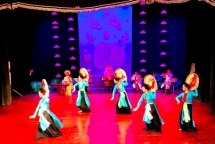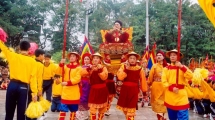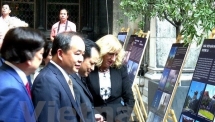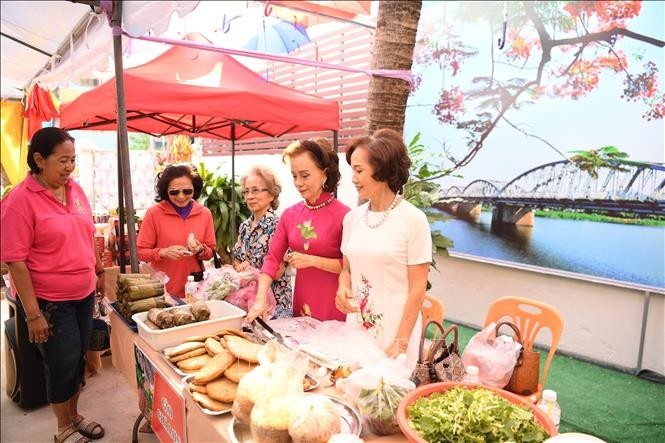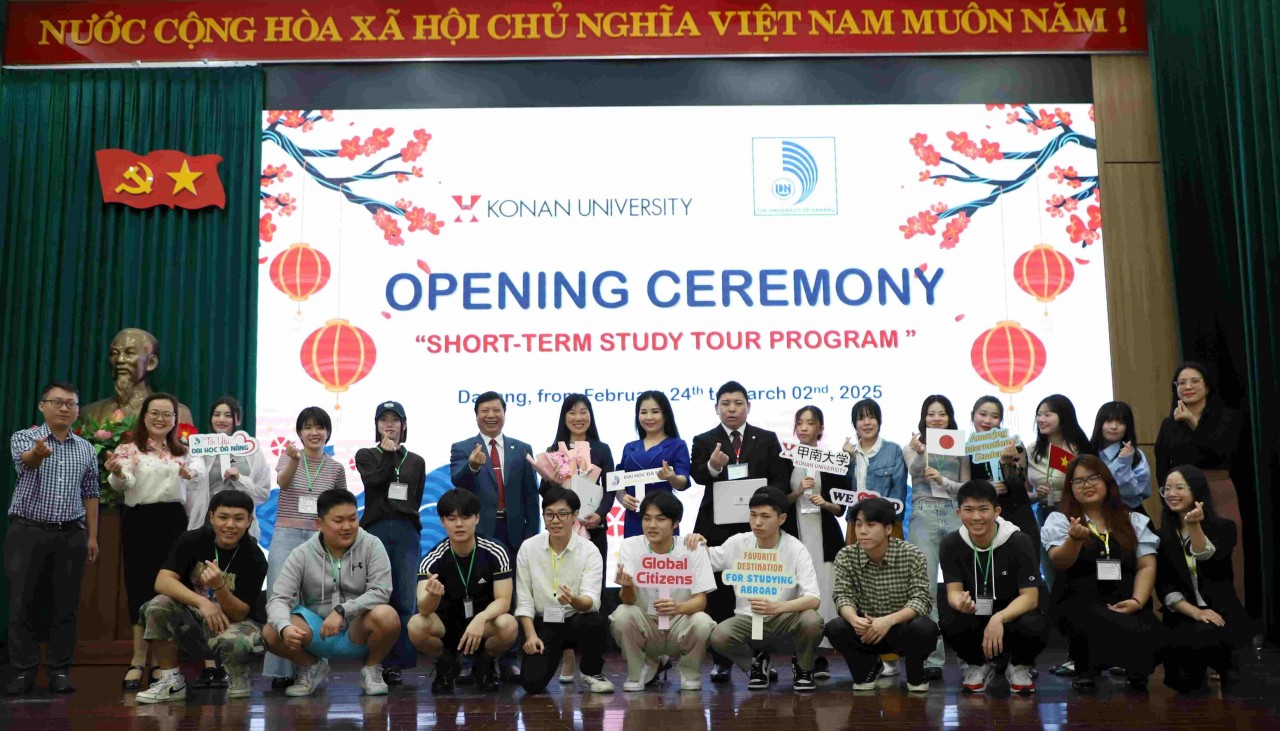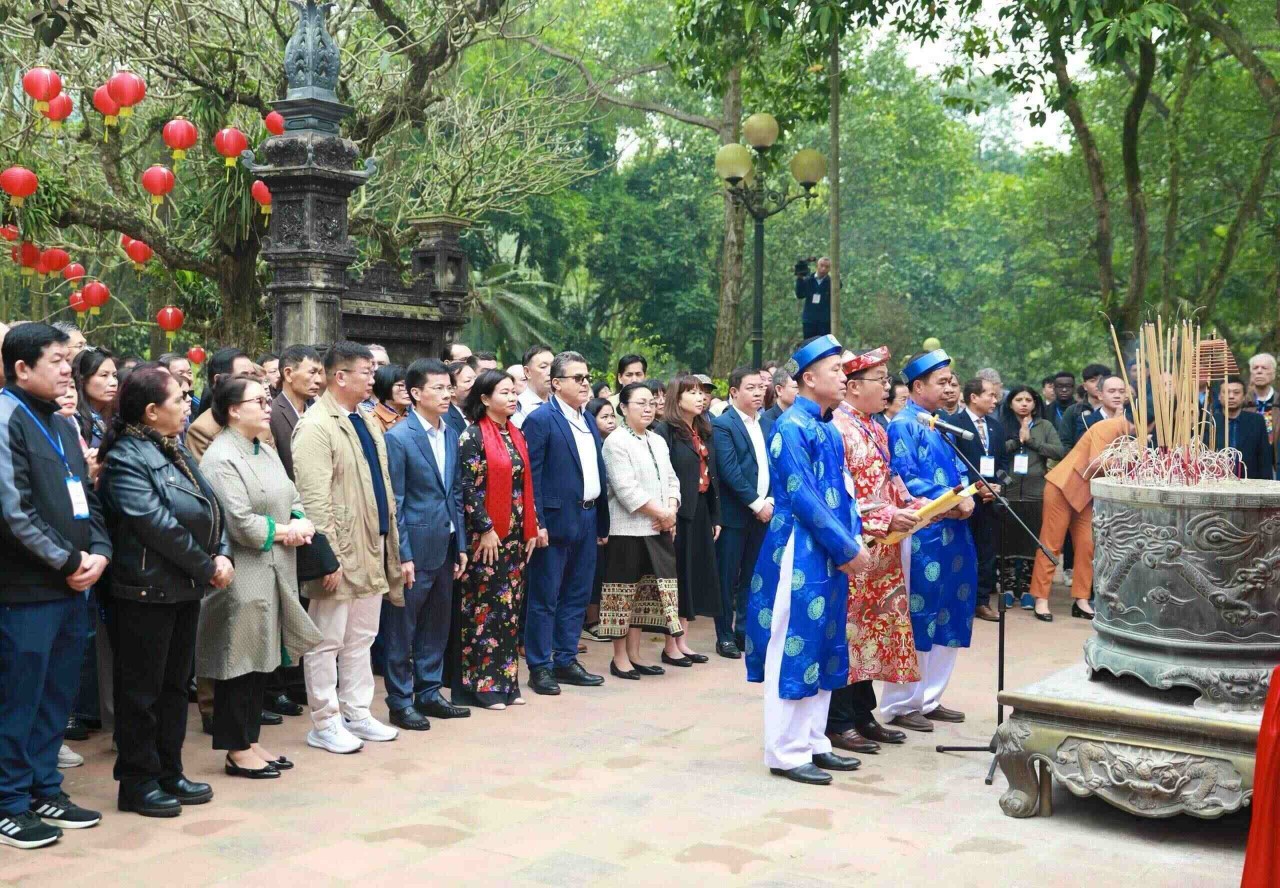The overview of a 5000-year age-old unique culture - Vietnam
| Vietnam Culture Week set to kick off in Cambodia this month | |
| Belarus to host Vietnam Culture Days in June | |
| Vietnam Culture Day shines in Austria |
Historians have shared a common view that Vietnam has a fairly large cultural community that was formed around the first half of the first millenium B.C. and flourished in the middle of this millenium. That was Dong Son cultural community.
This culture attained a degree of development higher than that of others at that time in the region and had its own characteristics but still bore the features of Southeast Asian culture because of the common South Asian racial root (Southern Mongoloid) and the wet rice culture. Different development routes of local cultures in various areas (in the deltas of Red River, Ma River, Ca River and so on) joined together to form the Dong Son culture. This was also the period of the very "embryonic" state of Vietnam in the form of inter- and super-village community, which came into being and existed in order to resist invaders and to build and maintain dykes for rice cultivation. From this pattern of "embryo" state, primitive tribes grew into nations.
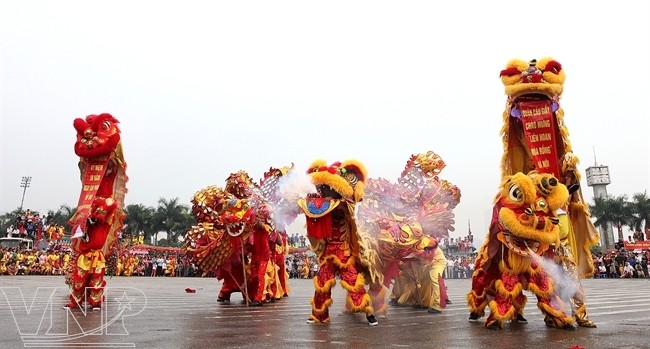 |
| Vietnamese Dragon dance is one tradtional performance that draws countless attraction (Photo: VNP) |
The period of Van Lang-Au Lac State
(lasting for nearly 3,000 years up to the end of the first millenium before Christ) in the early Bronze Age with 18 Hung kings was regarded as the first apogee in the history of the Vietnamese culture, which was typified by the Dong Son bronze drum and stable technique of cultivating wet rice.
The post-Chinese domination period was characterized by the two parallel trends of Han assimilation and anti-Han assimilation. The Dai Viet (Great Vietnam) period was the second apogee of the Vietnamese culture. Throughout the time of independent feudal states, milestoned by the Ly-Tran and Le dynasties, the Vietnamese culture underwent comprehensive restoration and quick boom, under the tremendous influence of Buddhism and Taoism.
After the chaotic Le-Mac and Trinh-Nguyenperiod, when the country was separated, and since the Tay Son dynasty reunited the country and territory, the Nguyen dynasty tried to restore Confucian culture. They, however, failed because Confucianism had already been fading and the Western culture started to penetrate into the country. The period up to the end of French domination was marked by a cultural mix brought about by two opposite trends - i.e. of Europeanization and anti-Europeanization; that presented the fight between patriotic culture and colonialist culture.
The period of modern Vietnamese culture has gradually taken shape since the 30’s and 40’s of last century under the banner of patriotism and Marxism-Leninism. Vietnamese culture, with the increasingly intensive integration into the world modern civilization and the preservation and enhancement of the national identity, promises to reach a new historical peak.
It can be said that there were three layers of culture overlapping each other during the history of Vietnam: local culture, the culture that mixed with those of China and other countries in the region, and the culture that interacted with Western culture. The most prominent feature of the Vietnamese culture is that it was not assimilated by foreign cultures thanks to the strong local cultural foundations. On the contrary, it was able to utilize and localize those from abroad to enrich the national culture.
The Vietnamese national culture emerged from a specific living environment: a tropical country with many rivers and the confluence of great cultures. The natural conditions (temperature, humidity, monsoon, water-flows, wet-rice agriculture) exert a remarkable impact on the material and spiritual life of the nation, the characteristics and psychology of the Vietnamese. However, social and historical conditions exert an extremely great influence on culture and national psychology. Thus, there are still cultural differences between Vietnam and other wet-rice cultures like Thailand, Laos, Indonesia, India and others. Though sharing the same Southeast Asian cultural origin, the Vietnamese culture was transformed and bore East Asian cultural characteristics because of the long Chinese domination and its cultural imposition on Vietnam.
The Vietnamese nation was formed early in the history and often had to carry out wars of resistance against foreign invaders, which created a prominent cultural feature: a patriotism that infiltrated and encompassed every aspect of life. Community factors with primitive origin were amalgamated early in the history and became the foundations for the development of patriotism and national consciousness. Continual wars were the major cause of the vicissitudes of the Vietnamese social development history. All the social and economic structures were often dismantled by wars, so the social development could hardly reach its peak. Also because of the destruction of wars, Vietnam has virtually no gigantic cultural and artistic construction, or if any, they could not have been preserved intact.
Vietnam has 54 ethnic groups living across the country. Each ethnic group has its own cultural identities, thus, the Vietnamese culture has both diversity and unity. Apart from the typical Viet-Muong culture, there are other cultural groups like Tay-Nung, Thai, Cham, Hoa-Ngai, Mon-Khmer, Mong-Dao, and especially the groups in the Central Highlands that still maintain fairly diverse and comprehensive traditions of a purely agricultural society that is closely attached to forests and mountains.
The following is an overview on main culture fields:
1. Philosophy and ideologies
At the start, with primitive and rudimentary cognition of materialism and dialectics, Vietnamese thought was mixed with beliefs. However, originating from agricultural culture that differs from nomadic culture by the appreciation of stillness over movement and closely related to natural phenomena, the Vietnamese philosophy paid special attention to relations that was typified by doctrine of yin and yang and the five basic elements (not exactly the same as the Chinese doctrine) and manifested by the moderate lifestyle tending towards harmony.
Afterwards, the influence of Buddhism, Confucianism and Taoism, that were conciliated and Vietnamized, contributed to the development of the Vietnamese society and culture. Particularly, Zen-Buddhists in the Tran dynasty came up with the interpretation of most philosophical subjects that was set forth by Buddhism (Heart-Buddha, being or not being, life and death) in an original and distinguished way. Although Confucianism flourished afterward, many famous Vietnamese Confucian scholars did not stick blindly to Confucianism and Mencianism, but rather adopted the spirit of Buddhism and Taoism to make their ideology more open, closer to the people and more harmonious with nature.
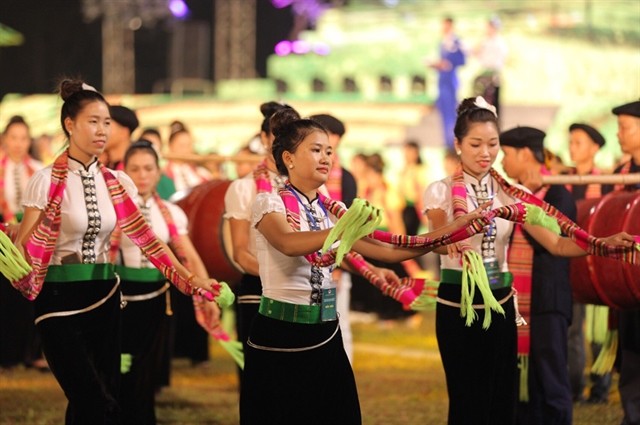 |
| There is a bunch of festivals in Vietnam thoughout the year, including the festival to highlight Thai ethnic group (Photo: Vietnam news) |
Under autocratic dynasties, deep feudal ideologies were imposed on farmers and bound women, however, village democracy and primitive community still existed on the basis of self-supplied agriculture. Farmers’ thoughts that penetrated deeply into the Vietnamese agricultural society had many positive and typical features of the traditional Vietnamese. Farmers were the core of wars of resistance and uprisings against foreign invaders. Many talented generals, topped by Quang Trung Nguyen Hue - the hero of the common people in the 18th century, came from farmers.
The policy that facilitated agriculture and restrained trade, prevailing in the Nguyen dynasty, blocked the development of city-dweller's consciousness. In the past, the Vietnamese ranked agriculture and education as their first and second priorities of occupations, while having a low opinion of business people. Other trades were regarded as minor ones, including cultural activities.
In the 19th century when Vietnamese feudalism faded and Chinese civilization declined, Western culture started to penetrate our countries, following the colonialists’ guns. The working class formed at the start of the 20th century as a result of the colonial exploitation programs. Marxism-Leninism was introduced in Vietnam in the '20s and '30s, combining with patriotism to become a momentum of historical changes, which led the country up to independence, democracy and socialism. The person representing this era was Ho Chi Minh, who was recognized by the international community and UNESCO as Vietnamese hero of national liberation and great man of culture.
The agricultural society is characterized by the village community with many prolonged primitive vestiges that have formed the specific characteristics of the Vietnamese. Those were the thoughts of dualism, a concrete way of thinking that was tilted to emotional experiences rather than rationalism and preferred images to concepts. However, it was also a flexible, adaptable, and conciliatory way of thinking. This was a way of living that highly valued emotional ties and attachment to relatives and the community (because "there would be no home in a lost country" and "the whole village rather than a sole roof would be engulfed by flood"). This was a way of behaving toward conciliatory, equilibrium and relations-based settlement of conflicts and disputes. This way of living could cope accordingly with the situation, which many times in the history was successful in using suppleness to prevail over firmness and weakness to resist strength.
On the scale of spiritual values, the Vietnamese highly appreciate "Benevolence" and closely combined it with "Righteousness" and "Virtues"; no benevolence and righteousness are tantamount to no virtues. Nguyen Trai once described the Vietnamese concept of Benevolence and Righteousness as the opposition to fierce violence, which was enhanced to the foundation for the policy of ruling as well as saving the country. The Vietnamese understood that Loyalty meant being loyal to the nation, which was higher than the loyalty to the ruler, and respected Piety without being so bound with the framework of family. Happiness was also among the top social values; people often make compliments on the happiness of a family rather than wealth and social position.
2. Customs and practices
The Vietnamese gastronomic habit tends towards vegetarianism; rice and vegetables are the main course of the meal that may be diversified by aqua products. Boiling is a special way of cooking of the Vietnamese people. Vietnamese people like a synthetic food processing style that involves many materials and ingredients. Today, although meat and fish are the main dishes of the meal, the Vietnamese do not forget pickled egg-plant.
The Vietnamese preferred to wear light, thin, well-ventilated kind of clothing that originated from plants and was suitable for such a tropical country as Vietnam, with grey, indigo and black colours. Men’s clothing changed from loin-cloth with bare upper part of the body to short jackets and Vietnamese traditional trousers (re-designed from Chinese trousers). In the past, women often wore brassieres, skirts and four-piece long dresses that were later modified to the modern ao dai. In general, Vietnamese women adorned themselves subtly and secretively in a society where "virtue is more important than appearance". Old-time clothing also paid attention to kerchiefs, hats and belts.
The old-style Vietnamese house was related to the watery environment (stilt-houses with curved roof). Then came thatch-roofed houses with clay walls, which were built mostly from wood and bamboo. This kind of house did not stand too high to avoid strong winds and storms, and more importantly, the house should face to the South direction to be free from hot and cold weathers. The interior of the house was also not so spacious to leave room for the courtyard, pond, and garden. Also, the Vietnamese thought that "spacious home was no better than sufficient food". Sizeable ancient architectures were often built shrouded and in harmony with natural environment.
 |
| The Buffalo-slaughtering festival in vietnam (Photo: VNGP) |
The traditional means of transport is waterways. Ship of all types together with the river and the wharf, are familiar in the Vietnamese geological and humanitarian images.
Vietnamese customs of weddings, funerals, holidays and rituals all are attached to village community. Marriages not only reflecte the lovers’ desire but also had to meet the interests of the family lines, the village; thus, the choice for would-be bride or bridegroom was done very carefully, which had to go through many formalities from the plighting ceremony, the official proposal to the bride’s family, the wedding to the marriage tie, the ritual of sharing bridal cup of wine, the newly-weds’ first visit to the bride’s family. Besides, the bride had to pay a fine in order for her to be accepted as a new member of the village. Funeral service is also proceeded very thoroughly to express the grief and see off the deseased into the other world. The family of the deceased does not have to take care of the service by themselves, they are also helped by the neighbors.
Vietnam is the country of festivities which take place all year round, especially in spring when there is little farming work. The major festivities are Lunar New Year, Nguyen tieu (15th day of the first lunar month), Han thuc (3rd day of the third lunar month), Doan ngo (5th day of the fifth lunar month), the Day for Wandering Souls (15th day of the seventh lunar month), and Mid-Autumn Festival. Each region has its own ritual holidays, the most important of which are agricultural rituals (such as the rituals of praying for rain, getting down to the rice field, and new harvest) and handicraft rituals (like the rituals of copper casting, forging, making fire crackers, and boat race). Besides, there are also rituals dedicated to national heroes and religious and cultural services (e.g, Buddhist rituals). Ritual holidays are usually divided into two parts: the service is carried out for blesses and thanksgivings, the holiday is the cultural activities of the community consisting of many folk games and contests.
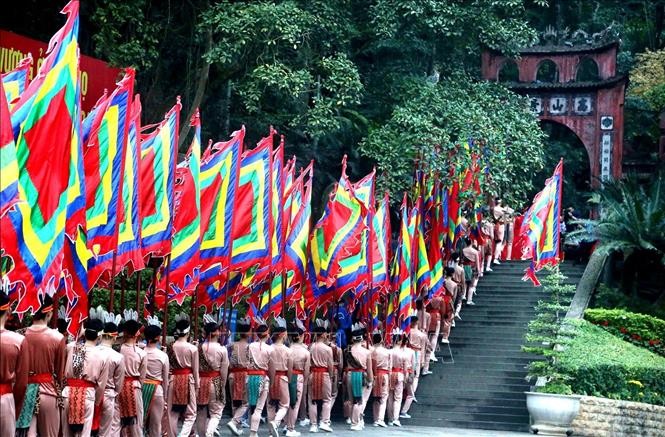 |
| A parade at Hung Temple Festivel, the annual festival in Phu Tho Province, Northern Vietnam (Photo: Vietnam National Administration of Tourism) |
In Vietnam, this long-standing belief was displayed in the cult of linga and yoni (in India, only linga was worshipped) and the act of sexual intercouse (this is an unpopular practice in Southeast Asia). Many traces of this practice can be found on many stone statues and columns, decorative motifs in the Central Highlands tomb-houses, some customs and dances, especially in the shape and motifs of ancient bronze drums.The Vietnamese folk beliefs since the ancient time consist of belief in fertility, worship of nature and worship of man. Human beings need to be reproduced, crops need to be lushly green for the nourishment and development of life, so belief in fertility came into existence.
Wet-rice agriculture that depended much on natural factors ignited the belief of worshipping nature. In Vietnam, this belief was polytheism and respect for goddess, and worship of animals and plants as well. A research book published in 1984 listed 75 goddesses or Holy Mothers, mostly matriarchal goddesses, also called Mau (ancient people not only worshipped the Creator but also Mau Cuu Trung which was a female Creator, as well as Goddes of Forest, River Goddess and so on). Regarding botany-worshipping belief, the rice plant was most venerated, the next were the banyan-tree, the areca-tree, the mulberry tree and the gourd. In respect of animal-worshipping beliefs, unlike nomadic culture that worships fierce wild animals, the Vietnamese tend to worship gentle species of animals like stags, deer, frogs, especially those which are easy to come by in the riverside regions like water-birds, snakes, and crocodiles. The Vietnamese proclaimed themselves as belonging to the Hong Bang family line and the Tien Rong breed (Hong Bang is the name of a huge species of water-bird; Tien, or Fairy, is deification of an egg-laying species of bird; Rong, or Dragon, is an abstract image of snake and crocodile). The ascending dragon that was born in the water is meaningful and special symbol of the Vietnamese nation.
Among the human-revering beliefs, the custom of ancestral worship is the most popular, which nearly become one belief of the Vietnamese (also called Dao Ong Ba in South Vietnam). The Vietnamese choose the death-day rather than the birthday to hold a commemorative anniversary for the deceased. Every family worships Tho cong, or the God of Home, who takes care of the home and blesses the family. Every village worships its Thanh hoang, the tutelary god, who protects and guides the whole village (the Vietnamese always honour the people who rendered distinguished services for villagers or national heroes who were born or died in the village to be their Thanh hoang). The whole nation worships the very first kings, sharing the common ancestors' death anniversary (the Festival of Hung Kings Temple). Particularly, the worship of Tu Bat Tu, or the Four Immortal Gods, namely, Tan Vien (preventing flooding), Saint Giong (resisting and defeating foreign invaders), Chu Dong Tu (together with his wife growing out of poverty to consistently build his fortune) and Lieu Hanh (heavenly princess who left Heaven for the earth in the yearning for happiness) has been regarded as extremely beautiful national values.
Although turning into superstition in some specific cases, folk beliefs have lasted consistently and mixed with orthodox religions.
Therevada Buddhism might have been imported directly into Vietnam from India through sea routes since the 2nd century A.D. Vietnamese Buddhism stays on earth rather than ascends up to heaven, attaches to exorcism and prayers for wealth, happiness and longevity rather than heading toward nirvana. Only when Maharayana Buddhism approached the country from China did Vietnamese monks have the chance to carry out in-depth study of Buddhism; however, separate sects were later formed, such as Truc Lam Buddhist Sect which attaches importance to the Buddha inside the human heart. In the Ly-Tran dynasties, Buddhism, though having reached its peak, still embraced both Taoism and Confucianism to create a cultural face with "the three religions existing at the same time". Over ups and downs throughout the history, Buddhism has become absolutely familiar to the Vietnamese; according to the 1993 stastistics, there were up to some 3 million Buddhist followers and some other 10 millions frequently going to the pagoda for worshipping the Buddha.
Under the Chinese domination, Confucianism had yet to gain a position in the Vietnamese society. The official adoption of Confucianism had not been recorded until 1070 when King Ly Thanh Tong built Van Mieu (Temple of Literature) to worship Zhou Gong and Confucius. In the 15th century, due to the need of constructing a unified nation, a centralized administration and a social order, Confucianism took the place of Buddhism to become a national religion under the Le dynasty. Confucianism, mostly Song Confucianism, that took root deep into the social and political structure, the system of education and examinations and the circle of Confucian scholars gradually dominated social and moral life. However, Confucianism was only accepted to Vietnam in specific factors, particularly on politics and morality, rather than its entire system.
Taoism penetrated Vietnam at roughly the end of the 2nd century. Since the Vo Vi (letting things take their own course) doctrine bore the thought of resisting the Chinese rulers, it was used as a weapon against the Northern feudalism. This religion also contained factors of magic and mystery, so it fits human subconscience and primitive beliefs. Many Confucianists also admired Taoist tendency of enjoying quietness and joyful leisure. However, Taoism has long been regarded as an extinct religion that only left vestiges in folk beliefs.
Christianity came to Vietnam in the 16th century as an intermediary of the Western culture and colonialism. It made use of the favourable opportunity in which feudalism was in crisis, Buddhism was depraved and Confucianism was in deadlock to become a spiritual relief of a part of the population. However, this religion failed to integrate into the Vietnamese culture for a long time. Christians had to set up an altar dedicated to Jesus Christ right at their homes. Only when the Gospel was introduced into Vietnam, Christianity was able to gain a position. In 1993, there were 5 million Catholics and nearly half a million Protestants.
Foreign religions imported to Vietnam did not exterminate the local folk beliefs, but they mixed with each other to derive specific variants for both sides. For example, Taoism could not lower the women’s role, which was reflected by widespread worship of Mau (Holy Mother). The features of polytheism, democracy, and community are manifested by the worship of groups of ancestors, and pairs of gods. Entering a pagoda, people can easily recognize that not only Buddhas but also gods and even human are worshiped there. Perhaps, only in Vietnam, there were legends that a toad dares to sue Heaven or a human being marries a fairy. These are the prominent features of Vietnamese beliefs.
4. Languages
There have been many theories regarding the origin of the Vietnamese language. The most persuasive one argues that the Vietnamese language previously belonged to the Mon-Khmer group of the Southeast Asian linguistic system, it was later transformed into Viet-Muonglanguage (or old Vietnamese language) and then separated to form the modern Vietnamese language. In the present-day Vietnamese language, many words have been proved to contain Mon-Khmerroots and to be phonetically and semantically relevant to the Muong language.
Throughout a millennium of Chinese domination and under the Vietnamese feudal dynasties, the official language was Chinese, but the Vietnamese always demonstrated its strength for self-preservation and development. The Chinese language was pronounced in the Vietnamese way, called the Han-Viet way of pronunciation, and Vietnamized in various ways to create many commonly used Vietnamese words. The diverse development of the Vietnamese language brought about the birth of a system of writing scripts transcribing the Vietnamese language on the basis of the Han script in the 13th century, called the Nom script.
Under the French domination, Chinese script was gradually eliminated and replaced by French that was used as the official language in administrative, educational and diplomatic activities. Thanks to the quoc ngu (Romanized) writing script that boasts the advantages of simple figure, composition, spelling and pronunciation, the modern Vietnamese prose was actually formed and then accepted positive influence from the Western cultural language. The quoc ngu writing script was produced by some Western missionaries including Alexandre de Rhodes; they cooperated with some Vietnamese to transcribe the Vietnamese language on the basis of the Latin alphabet for using in evangelism in the 17th century. The quoc ngu writing script was perfected and popularized to become a significant cultural tool. In late 19th century, publications were published in the quoc ngu script.
After the August 1945 Revolution, the Vietnamese language and the quoc ngu script have seized a dominating position and strongly developed and established itself as a multi-functional language that has been used in every field, at every educational level and has reflected every reality of life. Today, thanks to the Revolution, some ethnic minorities have their own writing scripts.
The Vietnamese language is characterized by mono-syllables, a concrete, abundant, acoustic and imaginary vocabulary and a proportionate, rhythmical, lively, flexible, symbolic and emotional way of expression, which tremendously facilitates artistic and literary creation. The Vietnamese dictionary published by the Center of Lexicography in 1997 consists of 38,410 entries.
5. Literature
Parallel and deeply interacting with other cultural aspects, the Vietnamese literature came into being at an early date, including two major components - folk literature and written literature. Folk literature held a great significance in Vietnam and made immense contribution to the preservation and development of the national language as well as nourishing the people’s soul. Folk literary works were diversified by myths, epics, legends, humorous stories, riddles, proverbs, folk-songs and so on, with many identities of Vietnamese ethnic groups.
Written literature was born roughly in the 10th century. Up to the 20th century, there had been two components existing at the same time: works written in the Chinese script (with poems and prose demonstrating the Vietnamese soul and realities; thus, they were still regarded as Vietnamese literature) and works written in the Nom script (mostly poems; many great works were handed down to the later generations). Since the 1920s, written literature has been mainly composed in the quoc ngu script with profound renovations in form and genre such as novels, new-style poems, short stories and dramas, and with a diversity in artistic tendency. Written literature attained speedy development after the August 1945 Revolution, when it was directed by the Communist Party of Vietnam’s guideline and focused on the people’s fighting and working life.
Admittedly, the whole Vietnamese nation likes poetry and composing poems - ranging from kings, mandarins, generals to monks, feudal scholars, and even revolutionaries. A farmer, an old boatman, a soldier all know some six-eight-word meters or satirical verses.
Regarding the content, the mainstream was the unyielding patriotic literature in every time and the anti-feudalist literature that was often expressed through the plight of women. Another important theme was the onslaughts against social vices. Great poets of the nation were all great humanists.
Modern Vietnamese literature has developed from romanticism to realism, from heroism in wartime to all aspects of life, and scoured into ordinary life to find out genuine values of the Vietnamese people.
Classical literature generated such masterpieces as Truyen Kieu (Nguyen Du), Cung oan ngam khuc (Nguyen Gia Thieu), Chinh phu ngam (Dang Tran Con), Quoc am thi tap (Nguyen Trai). Vietnam had some brilliant female poets like Ho Xuan Huong, Doan Thi Diem, and Ba Huyen Thanh Quan centuries ago.
In the Vietnamese modern prose, there were authors who could emulate with whoever in the world, namely, Nguyen Cong Hoan, Vu Trong Phung, Ngo Tat To, Nguyen Hong, Nguyen Tuan, and Nam Cao. They were sided by excellent poets like Xuan Dieu, Huy Can, Han Mac Tu, Nguyen Binh. Regrettably, great works that faithfully reflect the country and the times have yet to appear.
6. Arts
Vietnam has got some 50 national musical instruments. Among percussion instruments, the most popular, diverse and long-lasting are trong dong (bronze drums), cong chieng (gongs), dan da (lithophone), dan t’rung... The set of blowing instruments is represented by flutes and pan-pipes, while the set of string instruments is specified by dan bau (monochord) and dan day.
The Vietnamese folksongs are rich in forms and melodies of regions across the country, ranging from ngam tho (reciting poems), hat ru (lullaby), ho (chanty) to hat quan ho, trong quan, xoan, dum, vi giam, ca Hue, bai choi, ly. Apart from this, there are also other forms like hat xam, chau van, and ca tru.
Traditional performing arts include cheo and tuong. Water-puppet is also a special traditional art that was ignited in the Ly dynasty. At the start of the 20th century, cai luong (renovated theatre) appeared in Cochinchina with melodies of vong co.
The Vietnamese acoustic arts generally have symbolic, expressive and emotional features. Traditional stage relates closely to the audience and is a combination of music and dance forms. The Vietnamese dance has few strong and tough actions, but contains many smooth and curling features with closed feet and a lot of arm-dancing actions.
In Vietnam, the arts of sculpture on stone, copper and terra-cotta came into existence very early, dating back to the 10,000 B.C. Later, enameled ceramics, wooden statues, shell-encrusted pictures, lacquers, silk paintings and paper-made pictures all attained high degree of artistic development. The Vietnamese plastic arts focus on expressing innermost feelings with simplified forms using many methods of stylization and emphasis.
There have been 2,014 cultural and historical sites have been recognized by the State and 5 sites, namely the Ancient Capital of Hue and Ha Long Bay have gained international recognition as the world heritage sites. The remaining ancient architectures are mostly pagodas and temples of the Ly-Trandynasties, palaces and stelas of the Ledynasty, the 18th century’s community houses, citadels and tombs of the Nguyen dynasty and Cham towers.
In the 20th century, in contact with the Western culture, especially after regaining the national independence, many new categories of arts like dramatics, photography, cinema, and modern art had taken shape and developed strongly, obtaining huge achievements with the contents reflecting the social and revolutionary realities. Up to 1997, there were 44 people operating in cultural and art fields honoured with the Ho Chi Minh Prize, 130 others conferred with the honourable titles of People’s Artist, and 1,011 with Eminent Artist. At the start of 1997, there were 191 professional artistic organizations and 26 film studios (including central and local ones). There have been 28 movies, 49 scientific and documentary films receiving international cinematic awards in many countries.
The traditional and national culture in the time of industrialization and modernization is facing tough challenges posed by the market economy as well as the tendency of globalization. Some cultural and artistic branches have been seeking for renovation. The preservation and development of the national culture, the selection of the traditional values and the construction of the new ones have turned the most important than any time in history. The traditional cultural values should be preserved but should be also enriched by the advanced cultural values of the mandkind. Culture should be modernized but should not be separated from the nation. The process of cultural reform is still under way...
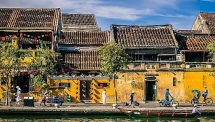 | Hoi An welcomes preservable solutions for national culture heritage Hoi An ancient town made a calling plan for variously innovative measures to preserve the cultural heritages during the 5-year term. |
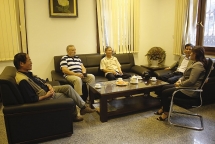 | Hungary – Vietnam strengthen relationship through multiculture To date, the relationship between Hungary – Vietnam has lasted for 70 years (1950 – 2020). This bond leads to various intercultures and flourished movements ... |
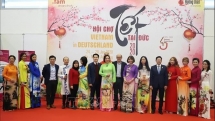 | Vietnamese culture introduced in Germany’s fair An event titled “Vietnam in Germany” is taking place within the framework of the AFA Augsburg spring fair 2020 in Augsburg city of Germany’s Bavaria ... |
Recommended
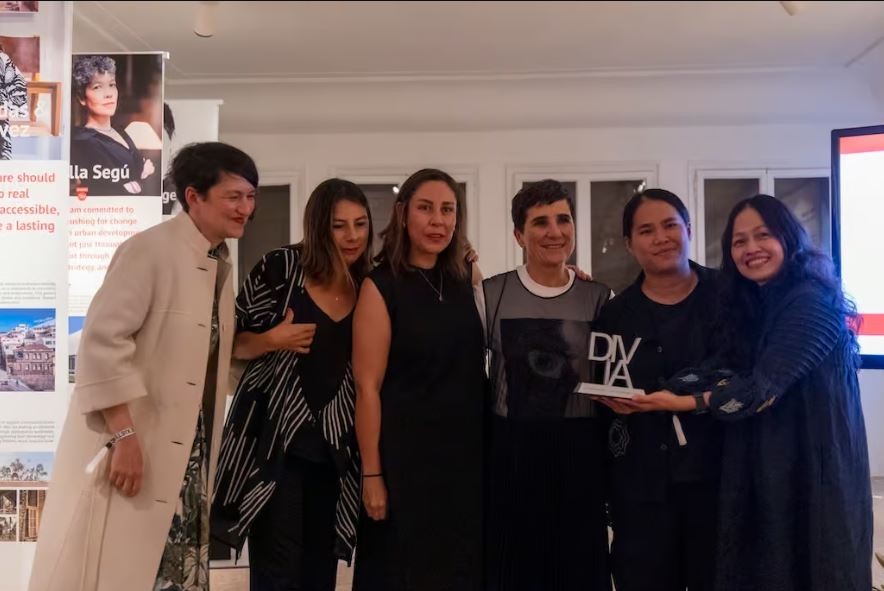 Viet's Home
Viet's Home
Vietnamese Architect Wins the Diversity in Architecture Award 2025
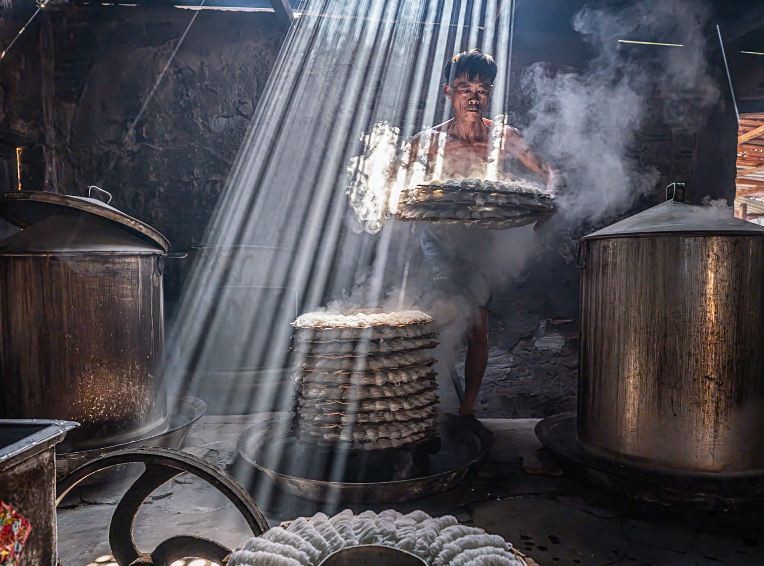 Viet's Home
Viet's Home
Vietnamese Photographer Triumph in Global Food Photography Contest
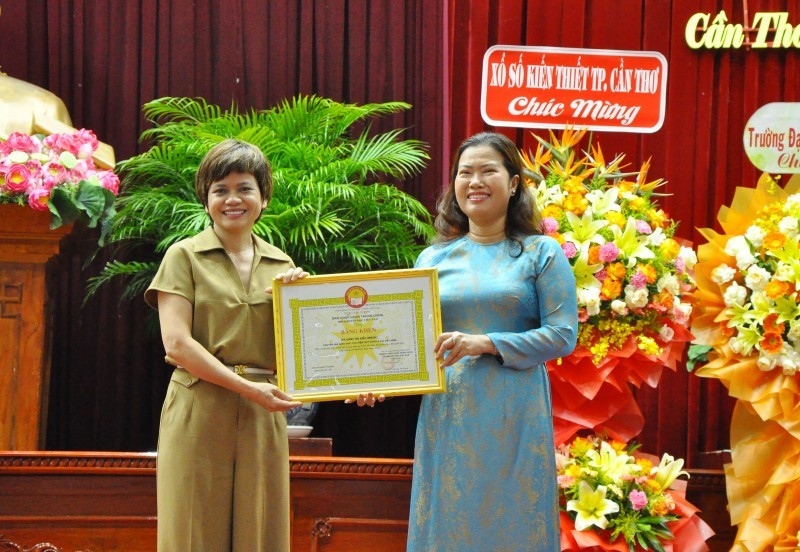 Viet's Home
Viet's Home
The Asia Foundation Awards 101 Scholarships to Can Tho Female Students
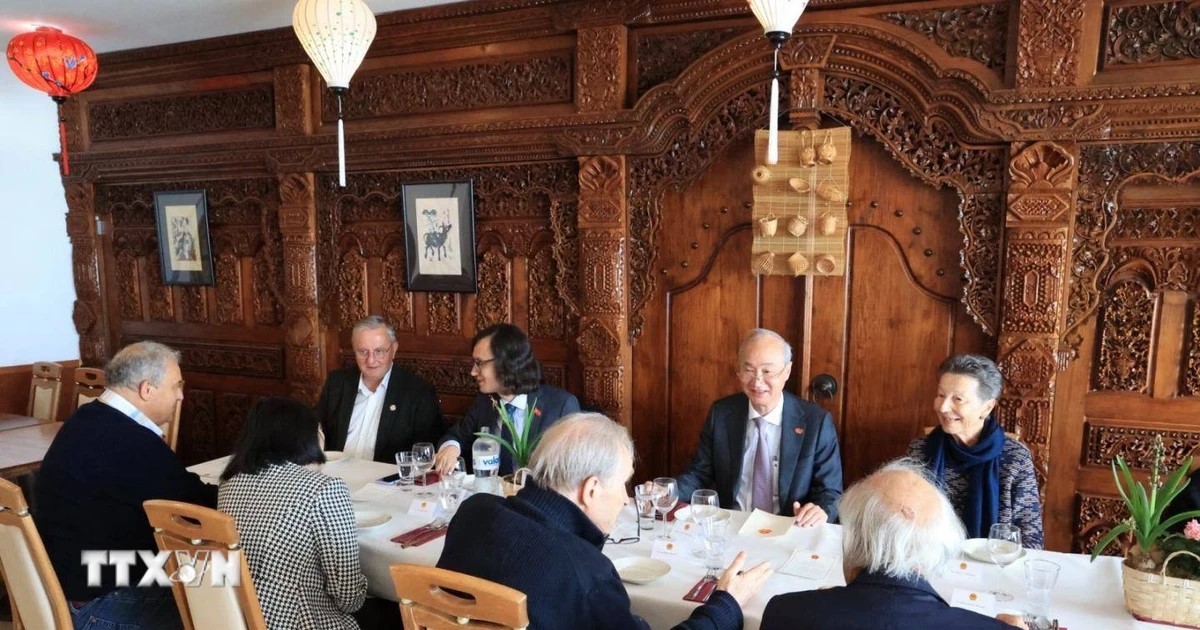 Viet's Home
Viet's Home
Ho Chi Minh And Deep Admiration in the Memories of International friends
Popular article
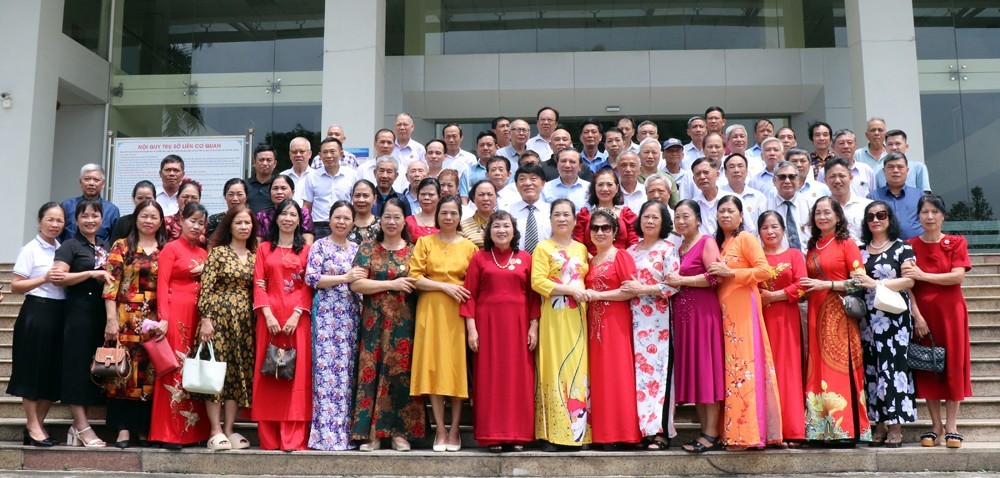 Viet's Home
Viet's Home
Meaningful People-to-people Diplomacy Activities in Bac Giang, Dong Nai, and Ho Chi Minh City
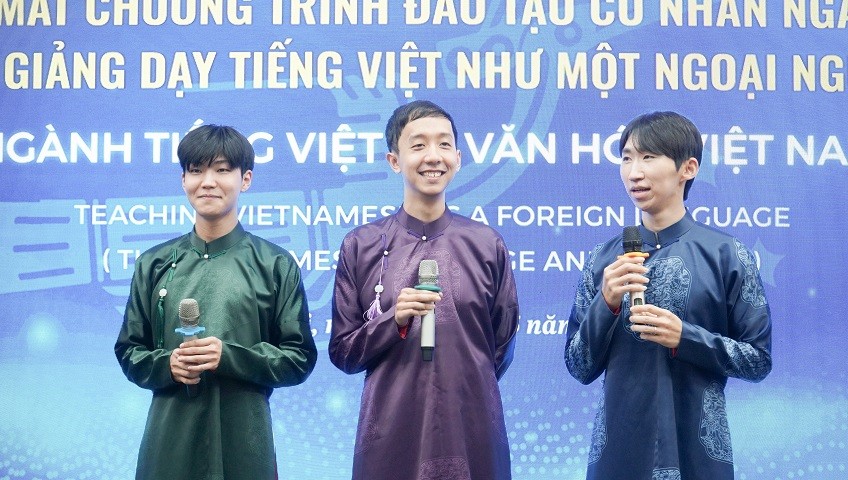 Viet's Home
Viet's Home
Brand New Vietnamese Language Training Program Launches in Hanoi
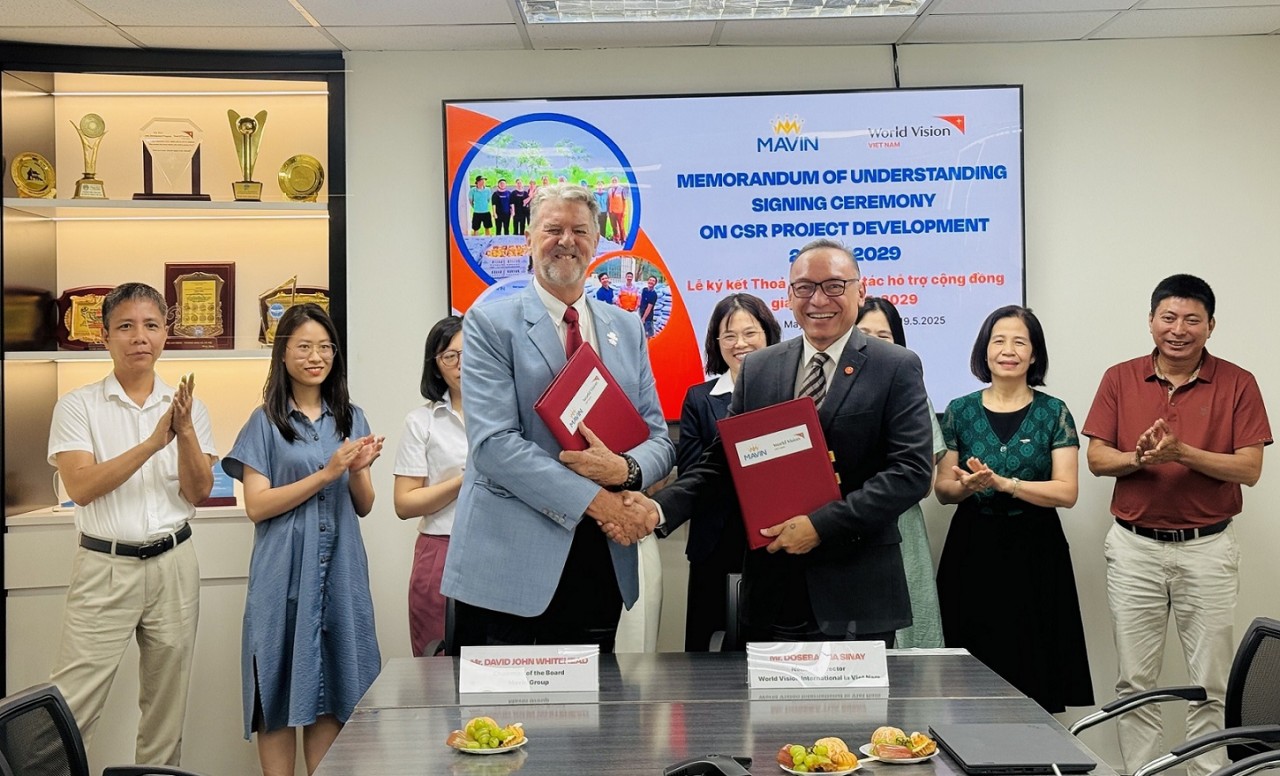 Viet's Home
Viet's Home
WVIV Supports Livelihoods and Improves Nutrition for Poor People in Thanh Hoa
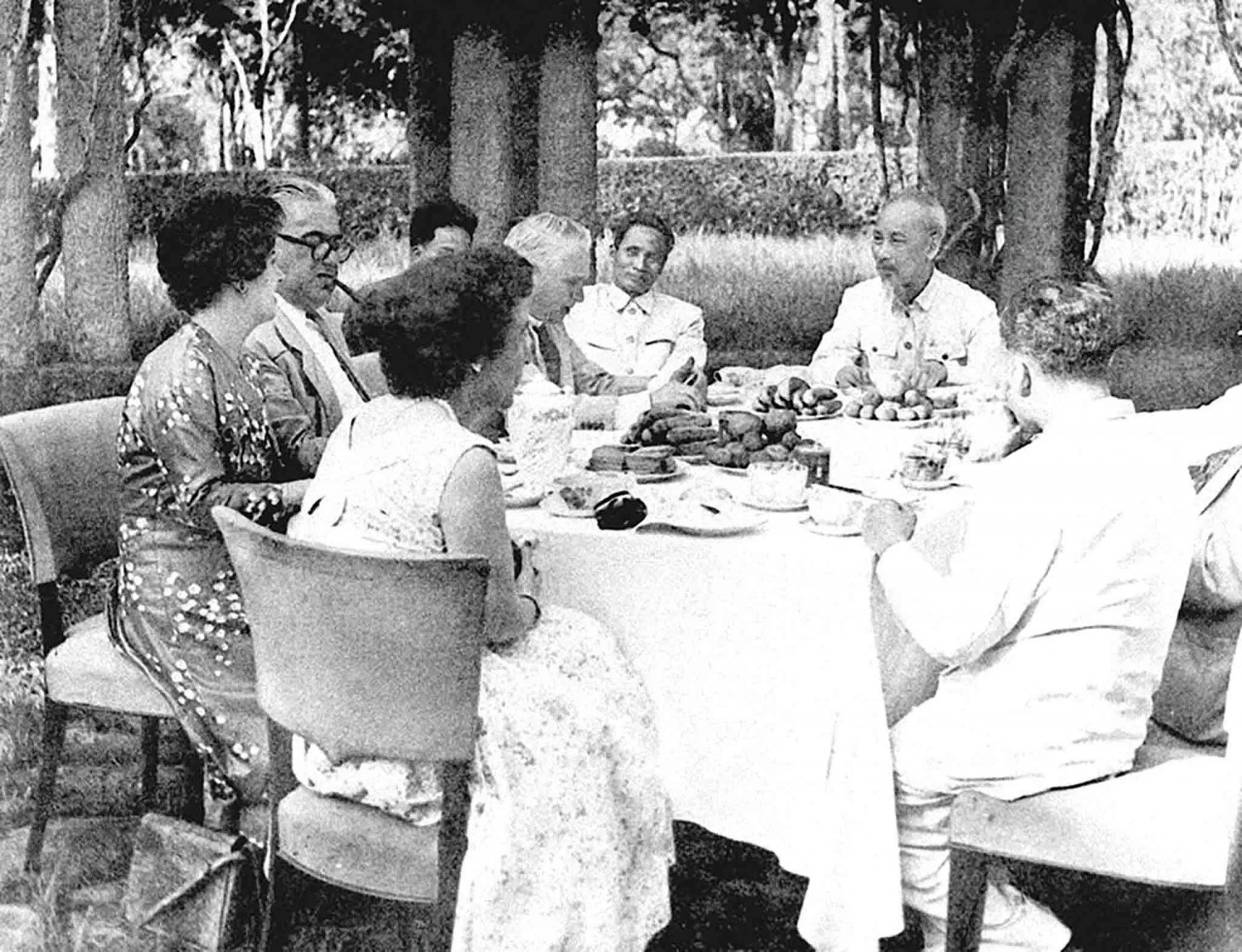 Viet's Home
Viet's Home

